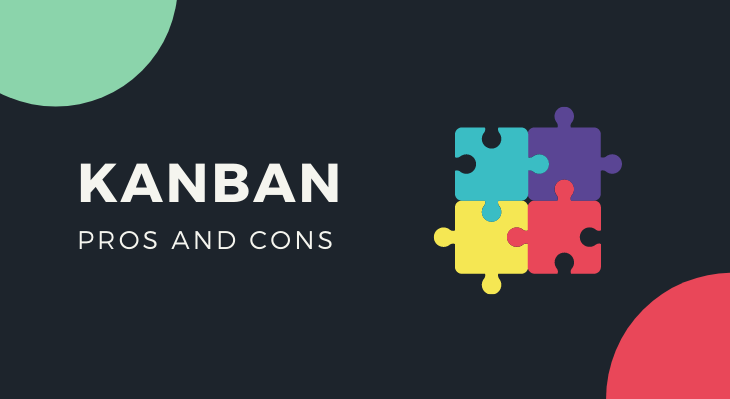Kanban is a workflow management method for defining, controlling, and upgrading services that deliver knowledge work. It plans to help you envision your work, optimize efficiency, and improve continuously.
The objective of the Kanban approach is to recognize expected bottlenecks in your cycle and fix them so work can move through it cost-adequately at an ideal speed.
The methodology additionally permits associations to begin with their current work process and drive developmental change.
Here are Some of the Pros of Kanban:
-
Ease of use:
Kanban is a very simple and easy to understand approach, which makes it practical for the management of a company to apply effectively. You do not have to be an expert to work with the Kanban approach.
-
Promotes continuous and sustainable improvements in the various functions of the company:
Kanban approach not only consists of manual guidelines or cards but also draws visualizations of the process outputs which makes the analysis of work easier. This could also highlight other potentially uncertain areas where additional focus is needed.
-
Adaptability:
Kanban encourages maximal adaptability, which is incredible for more extensive ventures that require ongoing changes.
-
Collaboration:
Kanban advances collaboration and makes the whole team work together to convey the ideal outcomes.
-
Low Overheads:
Supervision of the use of a Kanban board, cards, and analysis of output is easier as compared to most methods/approaches to project management.
-
Reduces costs and wastage:
Kanban stands out by highlighting process issues and solving them. Kanban system upgrades the flow and management by directly helping the company to engage the company’s existing systems i.e. just in time (JIT) and make to order etc. which decreases carrying or holding costs.
Also Read: Comparison of Agile and Scrum
Here are some of the Cons of Kanban:
-
Cannot be used independently:
Kanban is not a methodology that can be connected autonomously, or maybe it can be combined with other forms and frameworks of a company like JIT, make-to-order, and scrum, etc., making these frameworks more obvious.
-
Does not fit into a dynamic environment:
Kanban approach assumes the plans that are stable and consistent to a certain level, it may become feeble in industries where the activities are not still.
-
The inability for an iteration:
Building software in iterations is a foundation for most development processes, which is not integral to Kanban at a ticket level. You can build iteration on top of Kanban, but it often ends up being its own separate process.
-
Lack of timing:
There are no timeframes associated with each phase, which can be disadvantageous.
Conclusion:
Kanban does not have any prescribed roles and no individual is responsible for the team or a task. Kanban can be customized to fit the processes and work systems that the company already has in place.
When a work technique has been either received or created dependent on Agile standards, your group can start utilizing Agile instruments like Kanban sheets and task determining devices to help oversee undertakings, work processes, and cycles in a way that works for everybody.
Also Read: Comparison of Rapid Application Development and Agile

